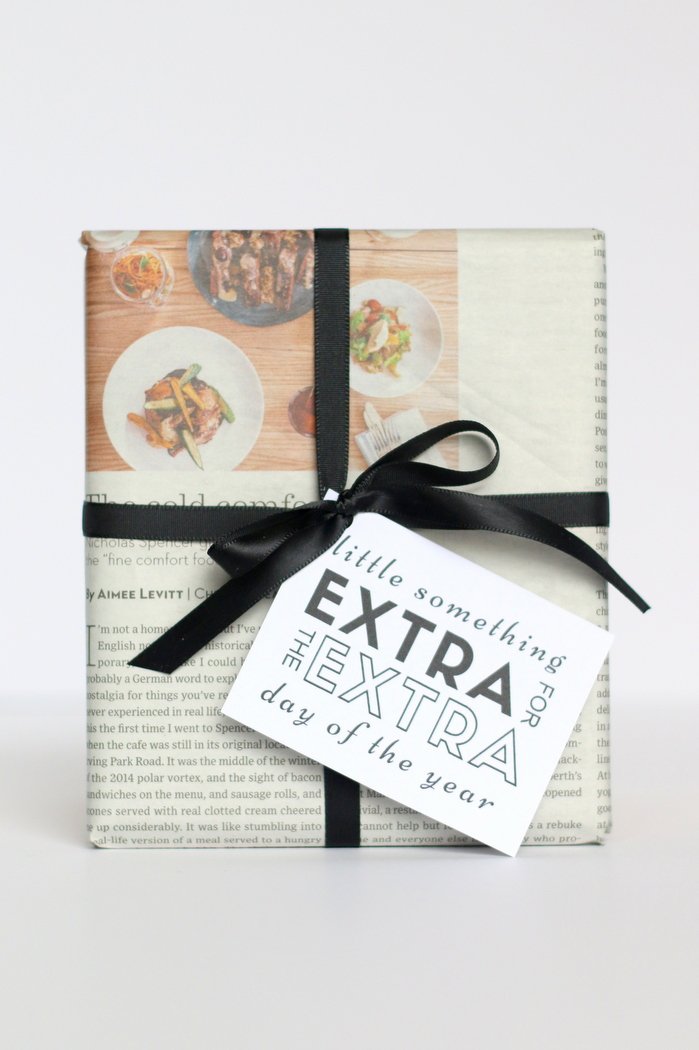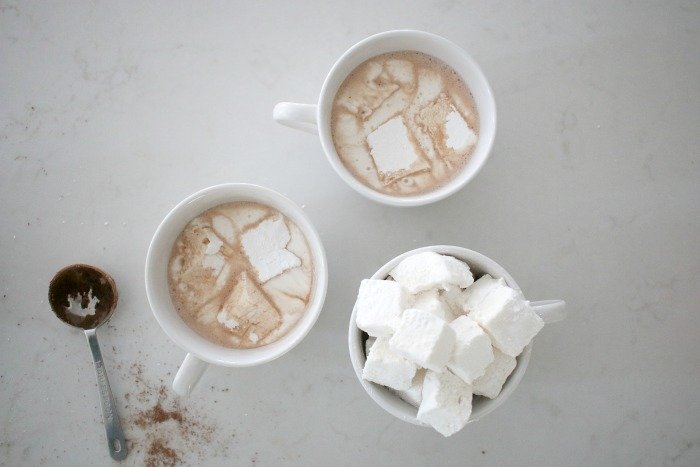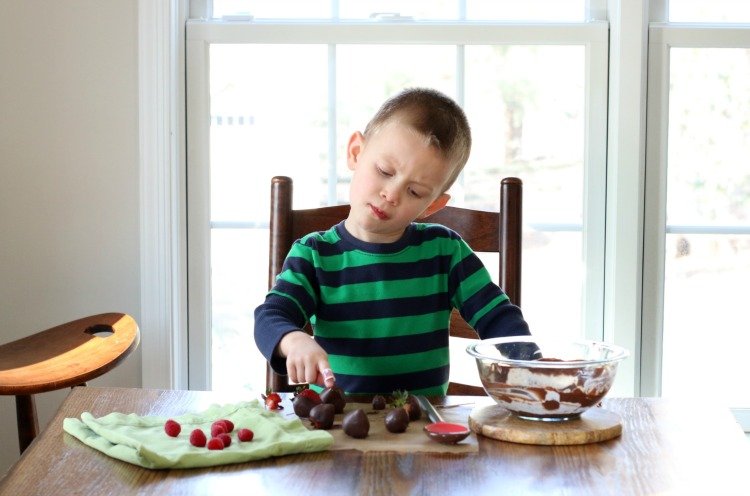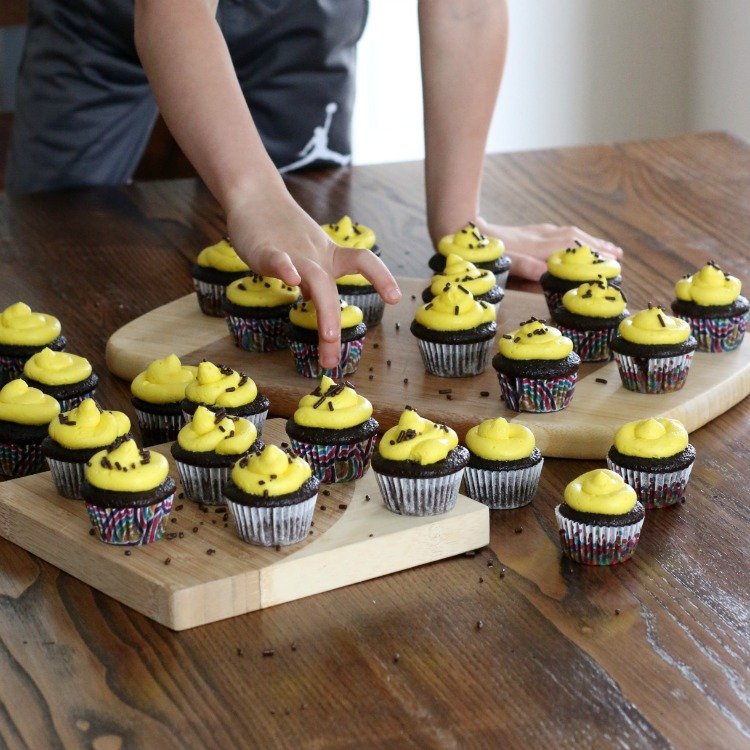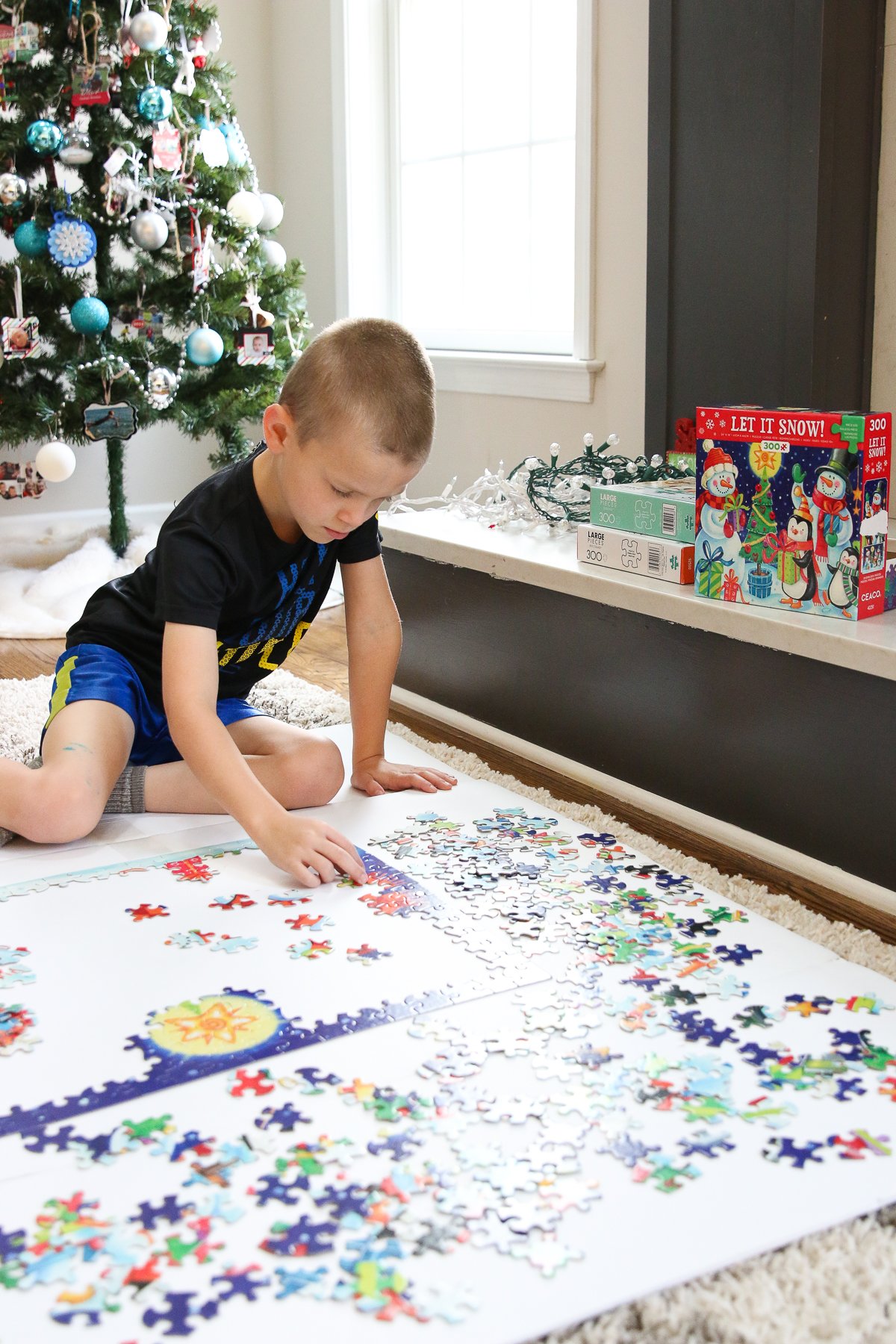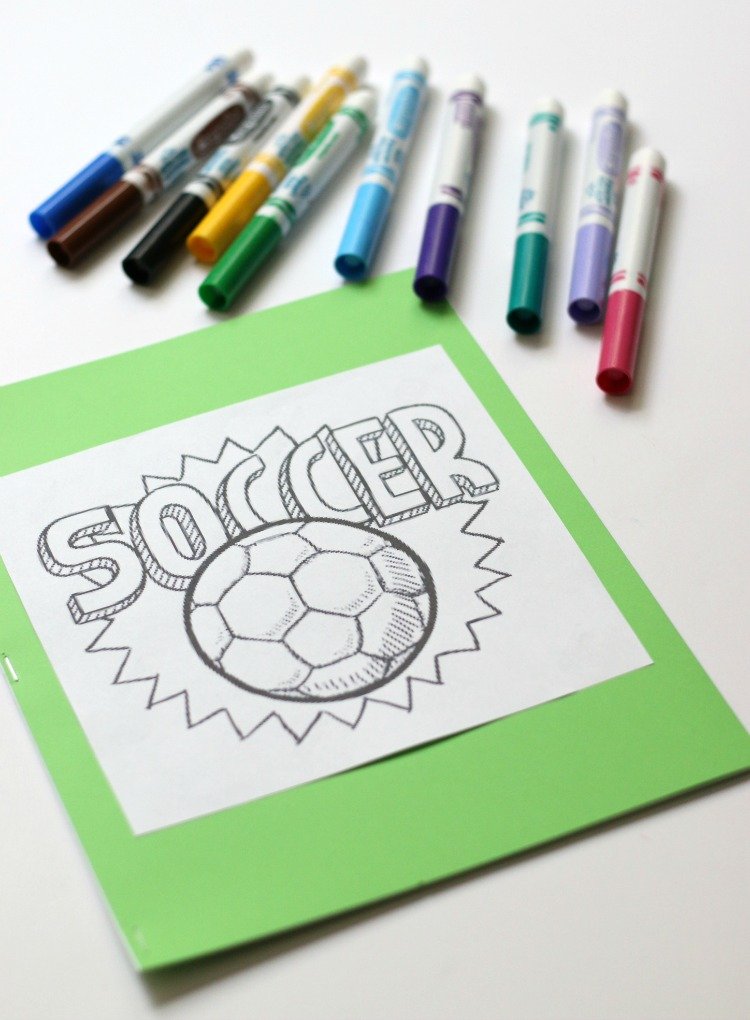What is Seed Paper and is Seed Paper Eco-friendly?
Looking for a creative and eco-oriented Valentine’s day card idea? Seed paper is a popular option, but not all seed paper is created equal when it comes to sustainability. Read on to learn about the sustainability of seed paper.
This post contains affiliate links. If you make a purchase, Honestly Modern earns a small commission that does not impact your purchase price. Thanks for supporting Honestly Modern.
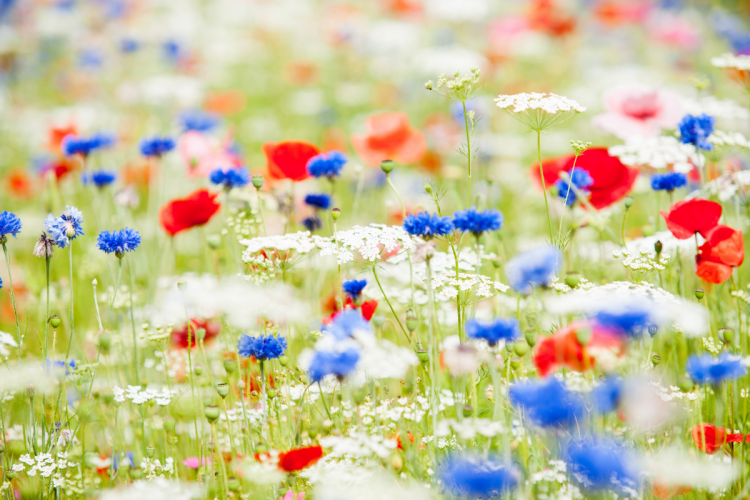
If you’re on the hunt for an eco-friendly medium for your Valentine’s Day cards this year, seed paper might be a perfect choice. After all, recycled paper that you can use to transform your love notes into beautiful wildflowers has the potential to make an unforgettable gift.
What is seed paper?
Seed paper is made from recycled paper with flower, vegetable, or tree seeds integrated throughout it. By incorporating seeds into recycled paper fibers, choosing seed paper minimizes the environmental impact of typical single-use paper products. If used properly, seed paper won’t even make it to landfills – it will be planted instead!
You can find this viral concept in all kinds of forms: gift tags, bookmarks, business cards, wedding favors, and even valentines.
Seed paper wasn’t always just a creative and eco-focused gift idea; it’s similar to (and potentially derived from) seed bombing, a popular guerilla gardening tactic.
Guerilla gardening is the idea of planting things in secret to bring plants and new growth into an area. Although not a new idea, guerilla gardening is experiencing a moment of popularity via TikTok.
Seed paper has been around in the United States since 1941, but individuals have been rolling seeds into clay balls called seed bombs for even longer.
Seed bombs are still used today as a method of planting in areas that may be devoid of greenery, but they’re not always successful. Often, if an area is barren, it’s because the soil lacks nutrients or is overly compressed. For these reasons, guerilla gardening is more successful when seeds are planted under a layer of soil in a more fertile area.
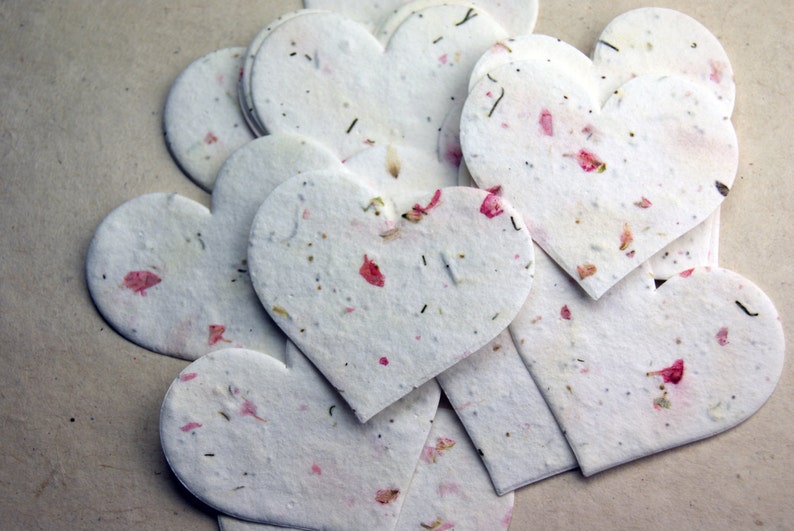
Where can you purchase seed paper?
You can purchase seed paper from a variety of specialized paper retailers. We like companies like Botanical Paperworks and Seedlings that transparently disclose the specific seeds integrated into their seed papers. With this information, you can determine if these flowers or plants are native to your area. Even if they aren’t specifically native plants, you can conclude whether or not they will be invasive.
Seed paper is also a popular handmade product on Etsy. You can find everything from seed paper confetti to these gorgeous hand-drawn blank cards made from seed paper available from artisans and handmade shops.
As it’s grown in popularity, you can find some seed paper options at large retail stores and their online counterparts, though it’s harder to ensure that the options available at these multi-national chains or websites are suitable for your region and not filled with invasive species. As always, support small businesses and local retailers when you can. It’s better for the local economy and the environment.
No matter where you purchase seed paper, look for plastic-free or repurposed packaging. While some products need plastic packaging, items like seed paper are pretty conducive to recycled and zero-waste packaging alternatives.
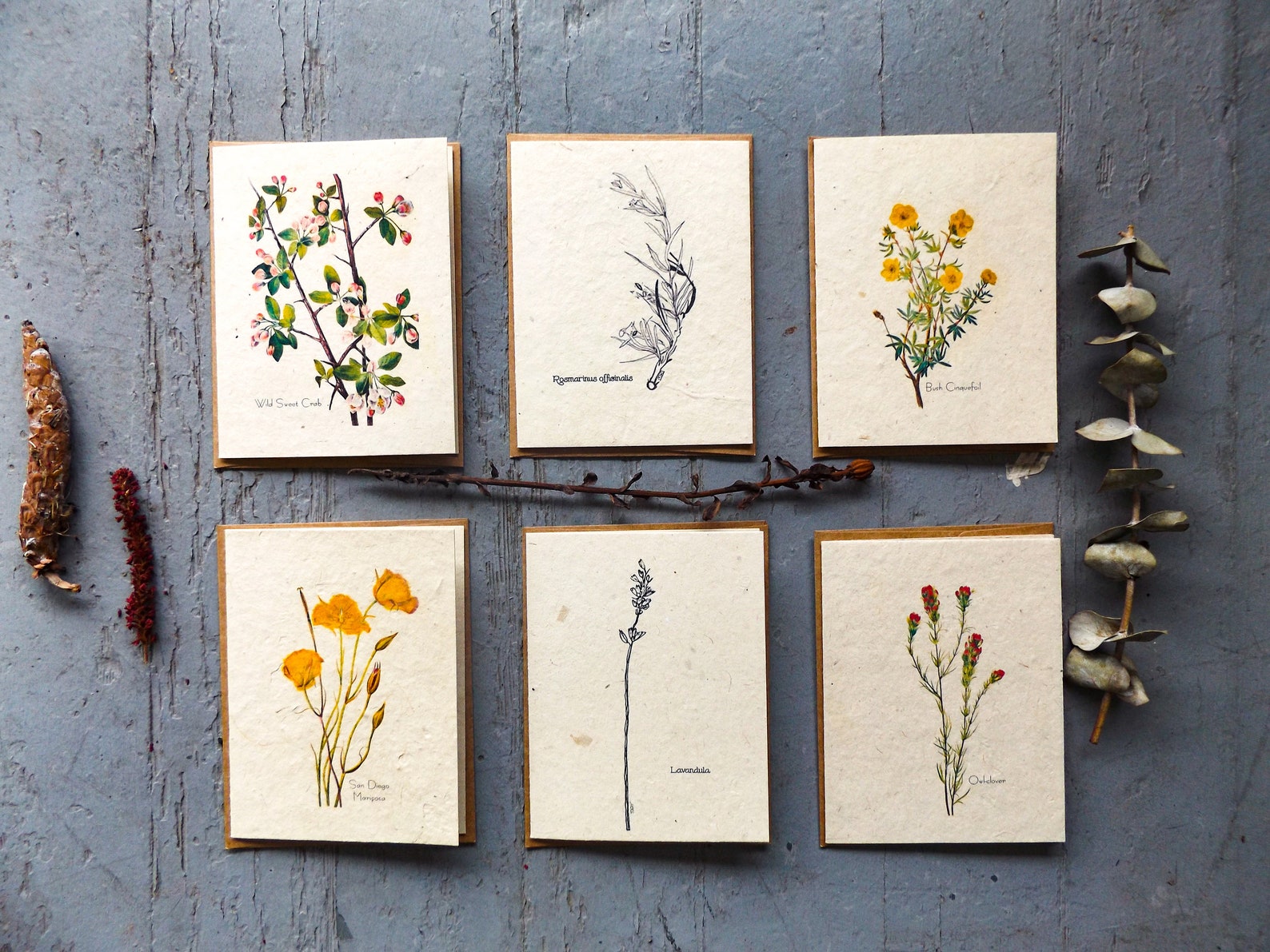
How is it made? A simple seed paper recipe:
If DIY alternatives are more your style, seed paper is pretty easy to make at home. Because DIY seed paper creation doesn’t involve any supply chain logistics, commercial production processes, or transportation, it has a much lower carbon footprint than store-bought alternatives.
To make DIY seed paper, you’ll need the following materials:
- 1 cup of paper (construction paper scraps, used scrap paper, or any compostable paper* headed to the recycling bin are perfect)
- 2 cups of water
- A blender
- 1 teaspoon of seeds
- A mesh screen or a fine kitchen strainer
*When choosing which repurposed paper products to include in your seed paper, be sure to choose paper that you could also compost. Most paper will be fine but avoid “shiny” or “glossy” paper, such as certain types of junk mail and magazines. Cereal and cracker boxes are often covered in this glossy material as well. While shiny and glossy paper can be recycled, it’s not compostable and won’t work well for DIY seed paper either, as it won’t break down properly once planted.
Here are instructions to make seed paper:
- Rip your paper into smaller pieces and add to the blender with water. The exact quantity of the paper and water is up to you, but the amount of water should be double the amount of paper added.
- Blend the water and paper.
- With the blender off, mix in the seeds.
- Pour the mixture onto your strainer and spread it out.
- If using a mesh screen, leave the mixture spread out in a thin layer on the screen until completely dry.
- If using a kitchen strainer, squeeze out as much liquid as possible and spread the mixture onto a dishcloth to dry.
- Rinse and clean your blender right after removing the seed paper mixture. Cleaning the blender can be a messy and difficult process, especially if you let the paper bits dry inside the blender. A quick rinse could save you mountains of frustration.
Once your seed paper is completely dry, you can draw or write on it, cut it or fold it into cards, or punch a hole in it to use as a gift tag. The sky’s the limit!
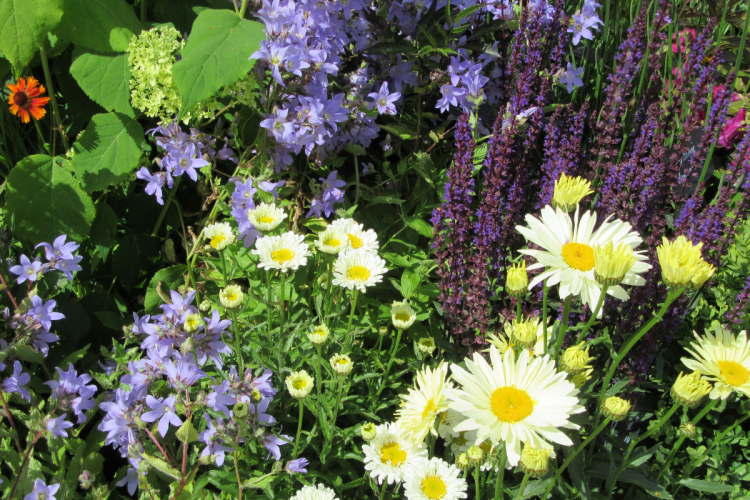
Sourcing native seeds for DIY seed paper
The process of collecting native seeds for your seed paper is a bit of a “choose your own adventure” situation. If you live in an area that doesn’t provide many opportunities for seed collection, or if you’re just looking to save some time, you can purchase seeds that are native to your region.
With a quick google search, you should be able to identify a few species that are native to your community. From there, either purchase seeds for those plants online or seek them out at a local garden center. If you live in the United States, check out American Meadows or Lawn to Wildflowers to find recommendations for seeds native to your area.
Related Reading: Learn more about Lawn to Wildflowers and why planting native wildflowers matters for the health of our ecosystems.
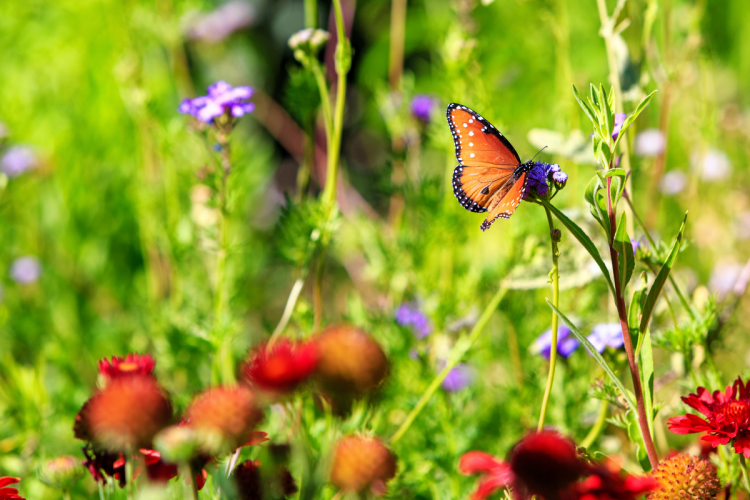
If you have a bit more time to spare, native seed hunting is a fun activity for the whole family!
Some plants make it easier to gather seeds than others, and there are a few methods for collecting seeds depending on the types of plants in your area. Some of the most common seed collection methods involve shaking, stripping, clipping, or lightly beating the plants once they reach maturity. Another common technique involves cutting off part of the flower or seed-bearing part of the plant, drying it in a paper bag, and then shaking out any seeds.
Whatever plants you choose to collect from, be sure to leave at least 50% of the species in the area you pick from to ensure that the species can continue to thrive and regenerate.
Once you collect your seeds, let them dry until you are ready to make your seed paper. When stored in plastic, seeds can develop mold. To avoid this, store the seeds in paper bags or envelopes.
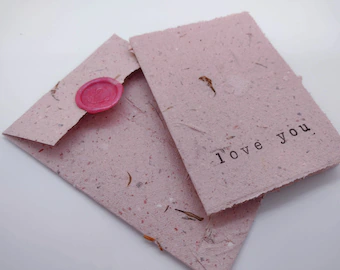
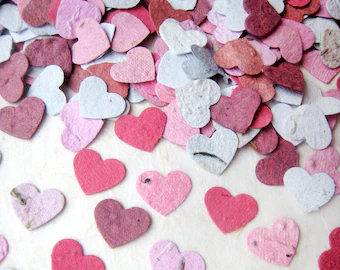
Is seed paper as sustainable as it seems?
Because it is created with recycled paper fibers, seed paper is a zero-waste concept at its core. But, as with all sustainability-focused products, not all seed papers are created equal.
Choose Seeds Wisely
When it comes to the true sustainability of seed papers, the most contentious issue at hand is the type of seed used, particularly for seed paper that integrates perennial wildflower seeds. Vegetable and herb seeds are less likely to cause harm to an ecosystem.
Integrating more native plants can be a huge asset to a region. Pollinators love native plants. Native plants also strengthen local ecosystems, and they’re beautiful. Non-native plants and invasives, however, can trigger a negative domino effect causing ecosystems to become unbalanced and decrease biodiversity.
According to the US Fish and Wildlife Service, non-native plant species “degrade, change or displace native habitats and compete with our native wildlife for food, water, shelter, and space, and are thus harmful to our fish, wildlife and plant resources.”
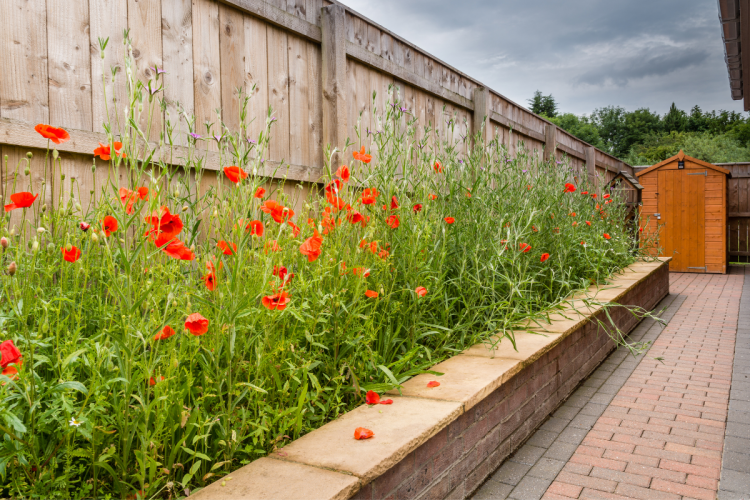
Use Repurposed Paper
While hunting for the most sustainable seed paper options, it’s also crucial to ensure that the paper fibers were previously used for an alternative purpose. For example, purchasing new construction paper and blending it into seed paper would minimize the environmental benefits. Instead, try fishing through your recycling bin, especially for paper scraps too small to be recycled, and giving those papers a new life!
Carbon Footprint of Seed Paper
Relative to regular or even recycled paper, seed paper incorporating proper seeds is more eco-friendly, even though both have carbon footprints from manufacturing, transportation, and packaging. However, DIY seed paper most likely has a lower carbon footprint than something purchased in a store or online.
Plant or Compost Seed Paper
The benefits of seed paper head straight to the trash when the paper ends up in the landfill, so if you make, buy, or receive it as a gift, be sure to plant or compost the seed paper. Of course, the point is to plant the seed paper, so that’s the best option. But if that’s not available to you, be sure to compost the seed paper so all the organic nutrients return to the soil and don’t linger in the landfill.
At the end of the day, the environmental impact of seed paper is dependent on its ingredients. Seed papers made with recycled paper pulp and non-invasive seeds are great and live up to the sustainability hype. Seed paper made with invasive seeds and virgin paper… not so much.
Native plants are a fantastic addition to your local ecosystem. If you’re able to gather the seeds, either from the internet or your backyard, seed paper is a beautiful way to upcycle your paper scraps into decor, cards, gift tags, craft paper, and more. A little bit of research goes a long way, and sometimes the beauty is in the journey of being able to create your own seed paper!
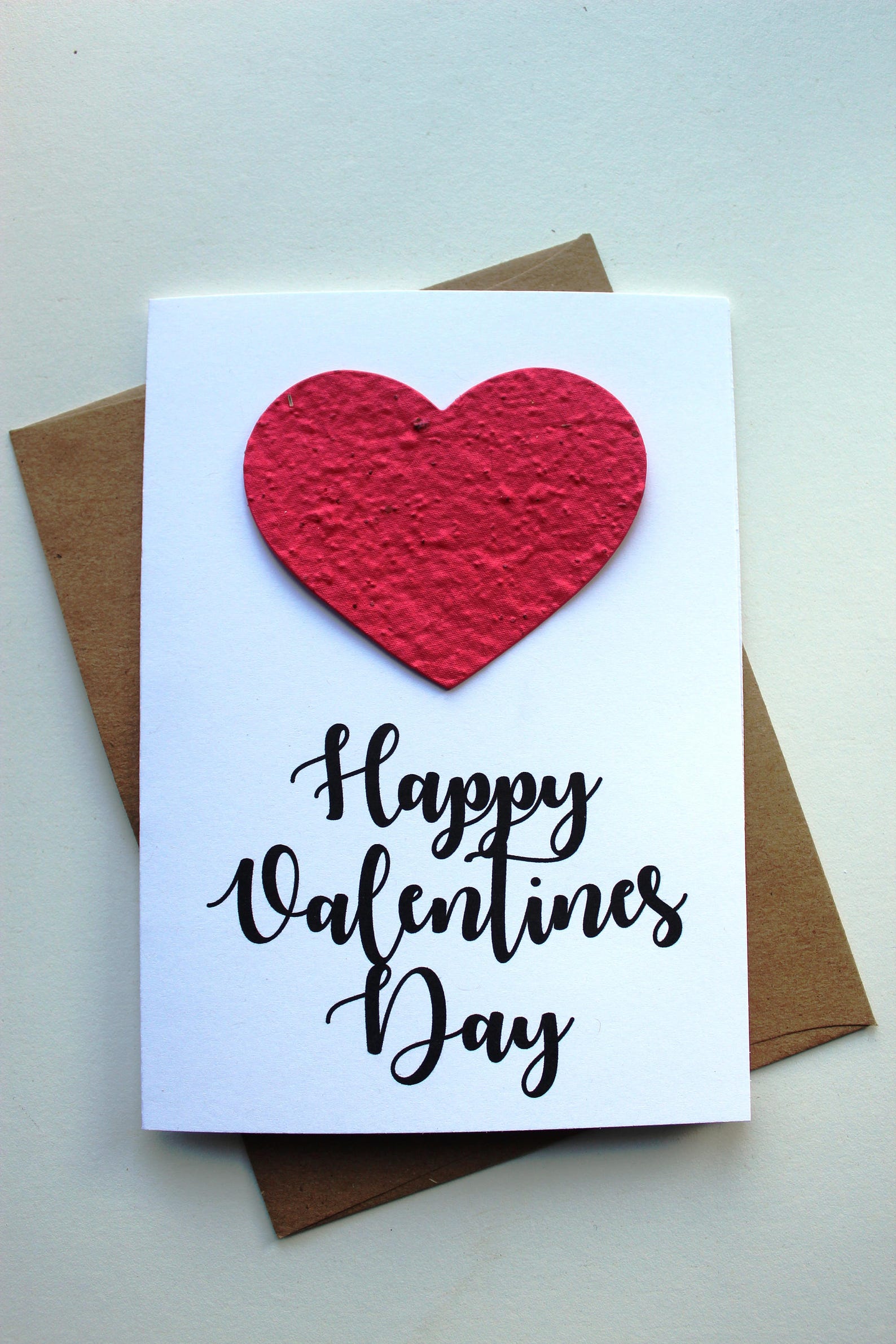
If You Like Sustainability of Seed Paper, You Might Also Like
Sustainable DIY Felt Heart Garland for Valentine’s Day
Reusable Paper Towel Alternatives | Swedish Dishcloths vs. Reusable Cloth Rags
11 Sweet Ideas for An (Almost) Zero Waste Valentine’s Day With Kids
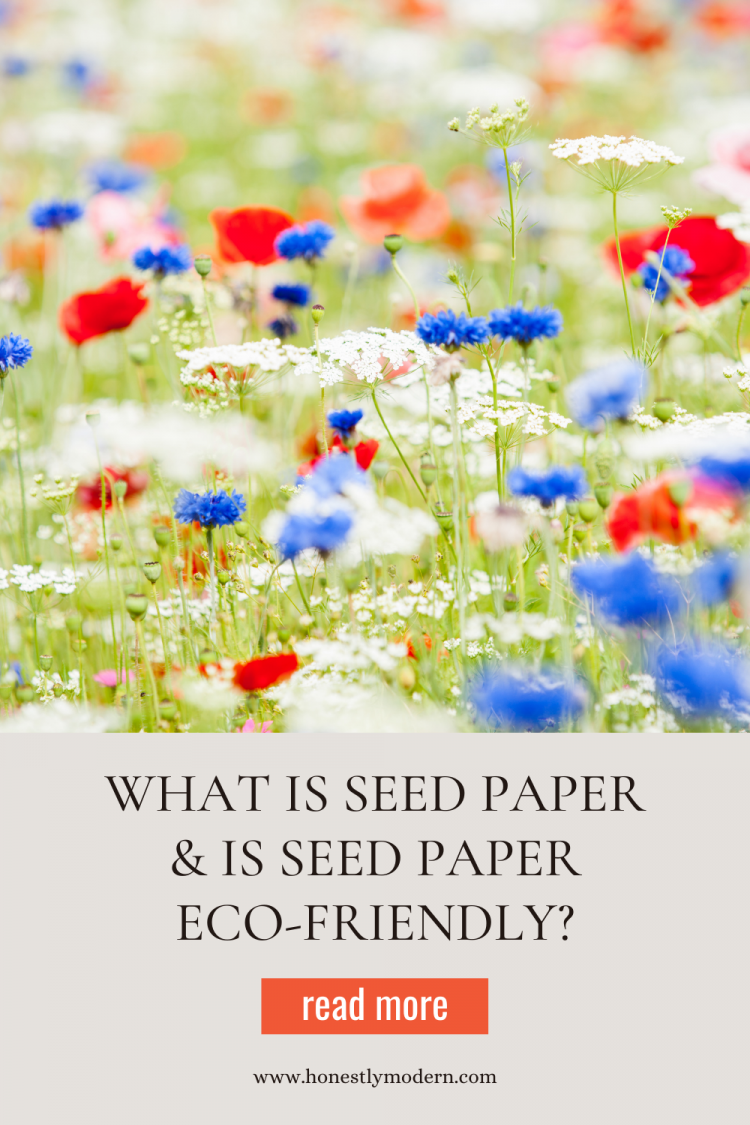
About The Author

Sara Mack
Sara Mack is a social media enthusiast with a passion for organic recycling and land conservation. Sara is a huge proponent of making sustainability accessible to all, and she’s the voice behind the marketing effort at Compost Crew.
Based in Washington, DC, she loves finding new hiking trails in her area, skateboarding (badly), upcycling new pieces for her wardrobe, and chasing the perfect oat milk matcha latte.
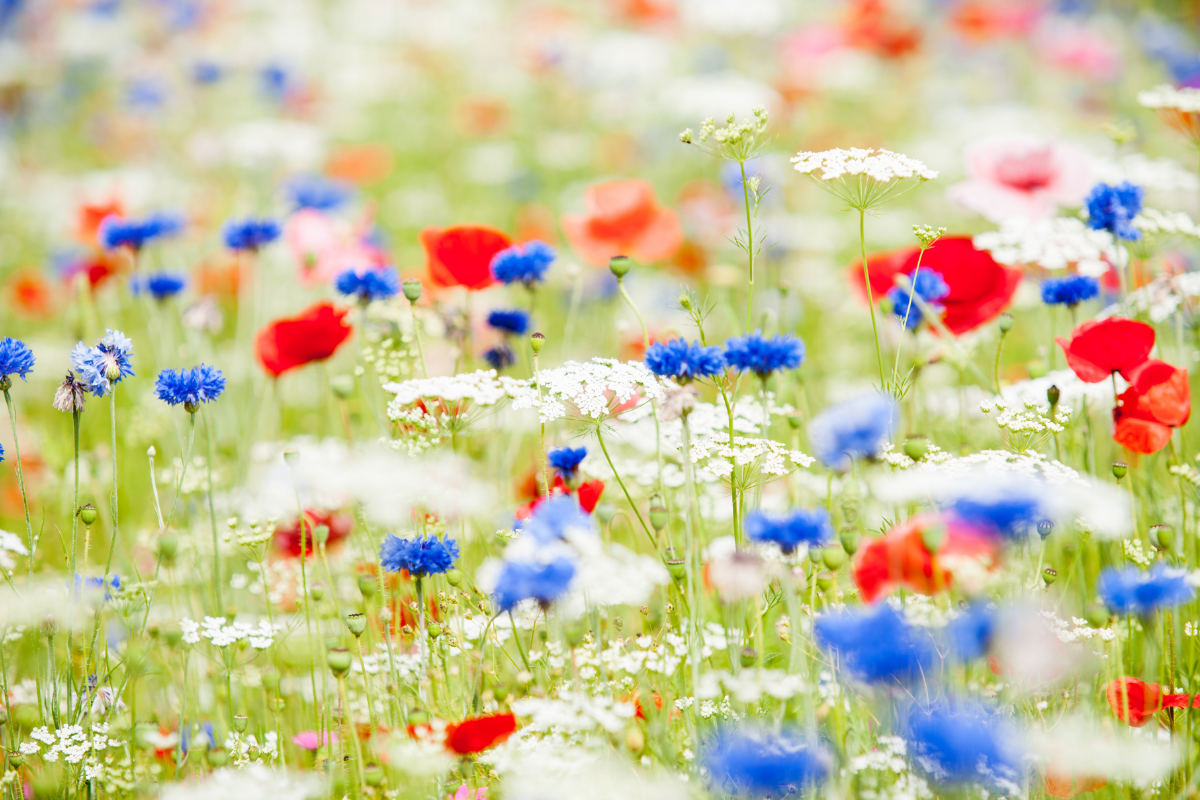
Simple DIY Seed Paper
Try this simple DIY seed paper recipe for a more eco-friendly paper option for cards, gift tags, decor, and more.
Materials
- 1 cup of paper (construction paper scraps, used scrap paper, or any compostable paper* headed to the recycling bin are perfect)
- 2 cups of water
- 1 teaspoon of seeds
Tools
- A blender
- A mesh screen or a fine kitchen strainer
Instructions
- Rip your paper into smaller pieces and add to the blender with water. The exact quantity of the paper and water is up to you, but the amount of water should be double the amount of paper added.
- Blend the water and paper.
- With the blender off, mix in the seeds
- Pour the mixture onto your strainer and spread it out
- If using a mesh screen, leave the mixture spread out in a thin layer on the screen until completely dry.
- If using a kitchen strainer, get out as much liquid as possible and spread the mixture onto a dishcloth to dry.
- Rinse and clean your blender right after removing the seed paper mixture. Cleaning the blender can be a messy and difficult process, especially if you let the paper bits dry inside the blender. A quick rinse could save you mountains of frustration.
Notes
*When choosing which repurposed paper products to include in your seed paper, be sure to choose paper that you could also compost. Most paper will be fine but avoid “shiny” or “glossy” paper, such as certain types of junk mail and magazines. Cereal and cracker boxes are often covered in this glossy material as well. While shiny and glossy paper can be recycled, it’s not compostable and won’t work well for DIY seed paper either, as it won’t break down properly once planted.

